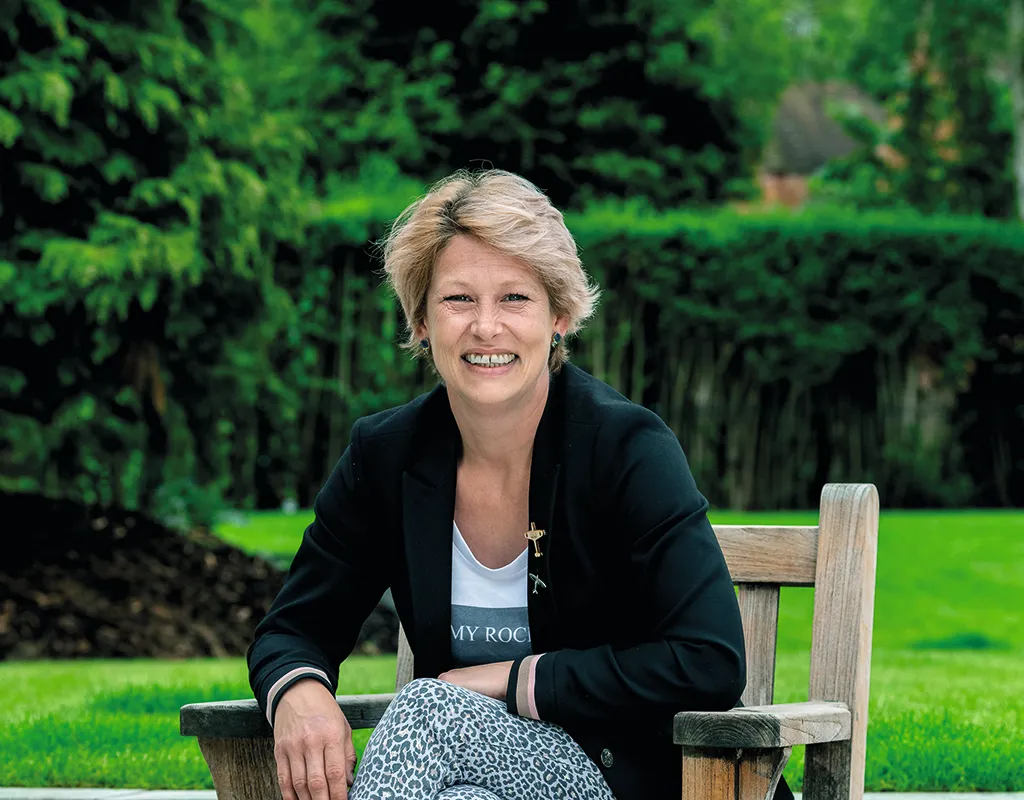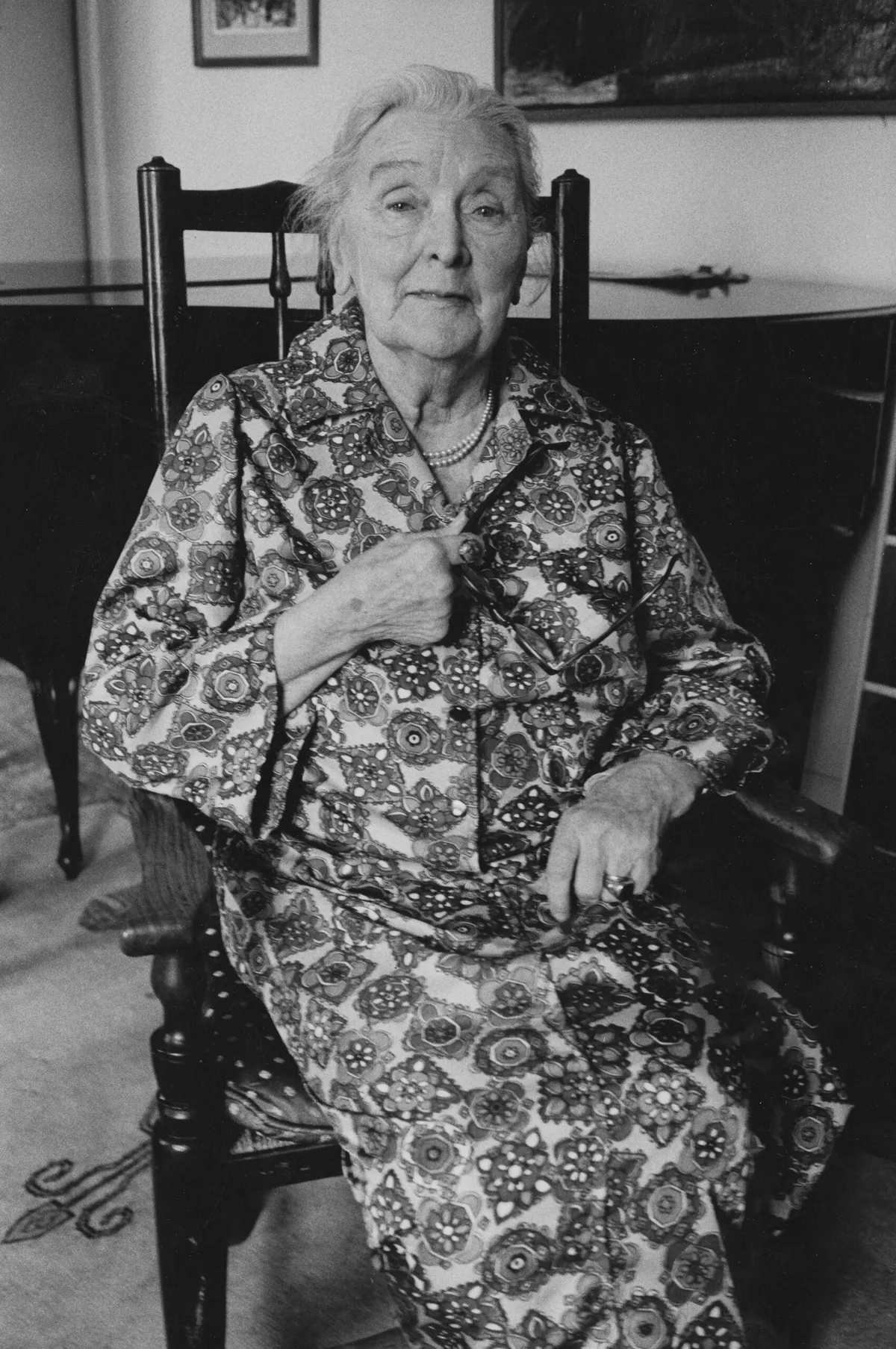On a spring day in 1985 a young Rebecca Blacker Jones entered the Aladdin’s cave that was her great aunt Elva’s home. The eerie Victorian house in Sutton, South London, had been uninhabited for months. Moth-ridden curtains drifted on the breeze, and pigeons lived in one of the bedrooms.
Rebecca and her sister Pip found a glass room that was a chaos of weeds, dust and cobwebs. It was also filled with pots of paint, brushes and pencils, all left to hand, as if their owner had just stepped out of the room.
Elva Blacker was a renowned artist whose career spanned many decades. She created her most important work during wartime, when she painted behind-the-scenes images of Royal Air Force servicemen and women. She captured a unique time in British history, in all of its intensity.
In recent years, Rebecca has become fascinated with her great aunt’s life story and achievements. “I never met Elva, but that visit became a marked moment in my childhood,” Rebecca explains. “Elva had died a year earlier, and the house remained vacant. Her main living area downstairs was an intriguing museum of Blacker family life, packed with furniture and artefacts as well as her easel, brushes and paints.”

In 2018, Rebecca and her mother Julia found boxes in the attic that her late father General Sir Jeremy Blacker had kept safe. “They were full of Elva’s life and contained letters, keepsakes and old-fashioned photograph albums. This spurred me on to discover more about her and to keep her memory alive.”
Elva was born in Sutton in 1908, the daughter of a well-to-do photographer William Blacker and his wife Clara. Thanks to William’s profession, Rebecca owns many photographs of Elva as a child – with her cherubic face and long dark curls, she made the perfect model. Indeed William sold photos of her as postcards.
Despite being born into a middle-class family with many opportunities, Elva was to face a number of obstacles in the pursuit of her dreams. During the early to mid-20th century, Britain was still a very patriarchal society and inequalities existed everywhere. Elva had an independent spirit, and Jeremy remembered her as someone born before her time.
Elva had an independent spirit, and Jeremy remembered her as someone born before her time
She had two brothers Maurice and Kenneth, who was Rebecca’s grandfather. “They were very driven, academic young men who were formally educated,” Rebecca says. “Elva’s passion from an early age was painting and it was her ambition to study at art school. However, her father wanted her to continue the family business, so she was taken out of school aged 15 and sent to study photography in London.
“I was astonished when I discovered that Elva studied at the Regent Street Polytechnic. This later became the University of Westminster, where I studied literature. The two of us walked the same corridors.”
Elva was determined to study fine art. While working as a photographer, she attended evening classes so that she could reach the level required to attend University College London’s prestigious Slade School of Fine Art. Finally, in 1936 she won a place at the age of 28, and became an expert in portrait miniatures.
Following the outbreak of the Second World War, Elva drove vehicles for the Blood Transfusion Service. In 1942, she was called up for service and joined the Women’s Auxiliary Air Force (WAAF) as a motor transport driver. After training, she was sent to Fighter Command at Biggin Hill in Kent.
The base was home to Spitfire squadrons, and became a key nerve centre during the Battle of Britain. Its pilots destroyed 1,400 enemy aircraft at the cost of the lives of 453 aircrew. Biggin Hill’s servicemen and women played a huge role in ensuring our safety from Nazi invasion.
It’s no wonder that Elva found the people of Biggin Hill a huge source of inspiration. In between duties, she painted the portraits of 1,000 pilots and ground crew at work and at rest. She had access to the crew rooms, sick quarters and many offices, which allowed her to create a record of RAF life in wartime a world away from the pomp of the parade ground.

Elva painted in watercolours and oils, as well as sketching in pencil. A dark, muted palette brought to life the pensive mood of the airmen. “The faces of the men look tortured, and there is such pain in their eyes.”
Most of Elva’s portraits are owned by the Royal Air Force Museum in Hendon, North-West London. Her art also shows the busy world of support staff behind the scenes, with WAAFs working in the communications room and dispatch riders awaiting their orders. It’s a touching legacy for the families of those who served.
Rebecca explains, “I have catalogues of the paintings with the subjects’ names, and I’ve managed to contact some of the families. It’s thrilling to discover if they have the original artwork.”
Elva’s reputation grew during the war, and in 1943 her works were exhibited at the National Portrait Gallery in London. In 1946, she was released from the WAAF with the rank of sergeant and returned to the family home. An exciting new phase lay ahead.
“Elva socialised in artistic, bohemian circles. She knew the actor Dame Sybil Thorndike and playwright George Bernard Shaw. She became a leading light in the local art circle, and persuaded the official war artist Graham Sutherland to become president of what is now known as Arts Network Sutton. Elva was a key member of this group, which mentors local artists.”

Her dream of travelling and painting en route became real in the 1950s, when she visited the USA and the Far East on her own.
“My father told me a wonderful anecdote. Elva decided to attend a vegetarian conference in India for a month, but she didn’t come home for two-and-a-half years!” Elva was a lifelong vegetarian at a time when such a choice was considered eccentric, if not crazy.
“Elva also rode her motorcycle around Surrey’s lanes at speed, sometimes coming off. She wore a bomber jacket, men’s baggy trousers and heavy boots. She was totally at odds with the postwar stereotype of womanhood.”
"Elva rode her motorcycle around Surrey’s lanes at speed"
Elva organised exhibitions of wartime artwork and donated the proceeds to the RAF Benevolent Fund. Rebecca is continuing Elva’s philanthropy by selling inks and sketch books online to raise money for the fund.
Sadly, a motorcycle accident resulted in injuries that caused double vision. This ended Elva’s career painting miniatures, but she continued to paint on a larger scale into her sixties until failing eyesight forced her to retire. Her finesse was recognised for many years and her work was exhibited in London, Paris and at the Royal Scottish Academy in Edinburgh.
The family home in Sutton was Elva’s base for life, and she never married. “A relationship with an American, General John Monroe, was rumoured, but we haven’t been able to trace his family.”
Elva died in 1984 at the age of 76. It was a year later that, as a seven-year-old, Rebecca entered the Aladdin’s cave of her home.
“She was a woman ahead of her time, and kept ploughing forward in order to achieve her dreams," Rebecca says now. "The more I’ve found out about Elva, the more of an affinity I feel with her. We seemed to hit milestones at similar ages, and her letters reveal shared concerns. It has been an emotional comfort to discover such a kindred spirit.”
Do you have a family story to share with Who Do You Think You Are? Magazine? Email wdytyaeditorial@ourmedia.co.uk for your chance to appear in the magazine!